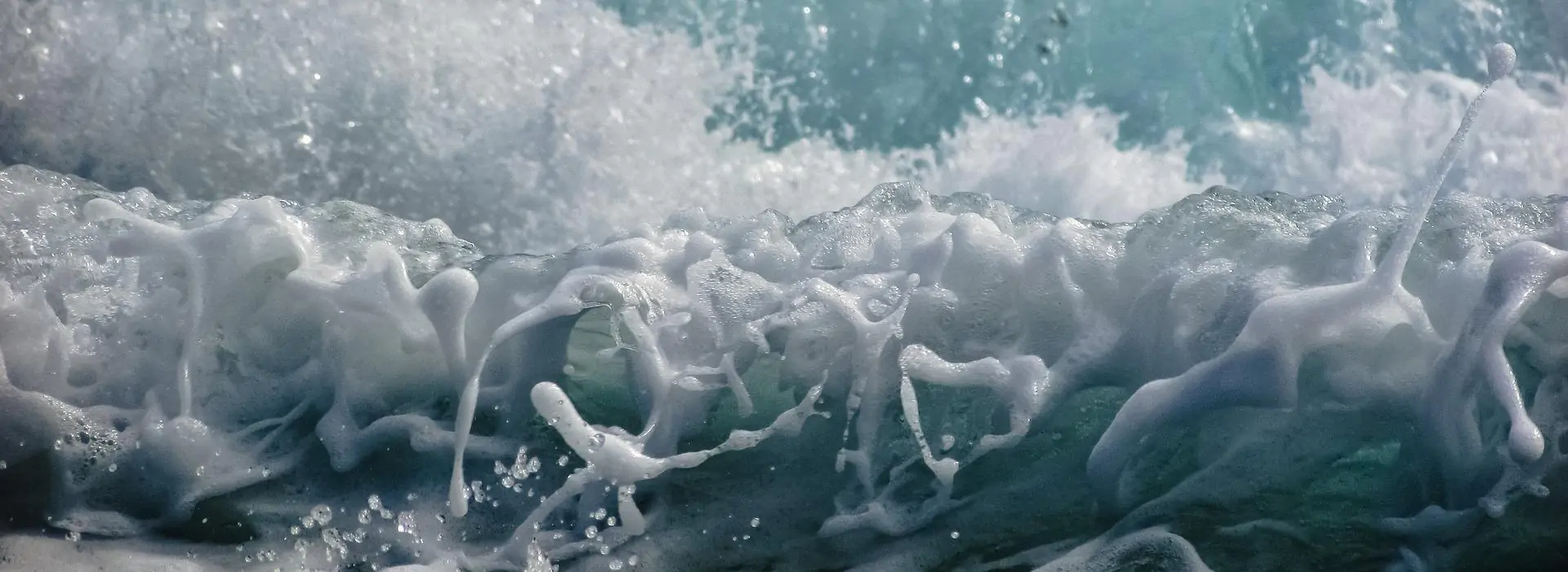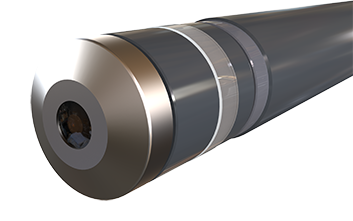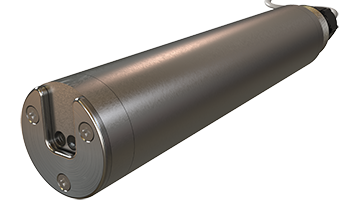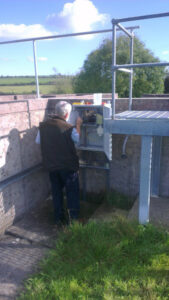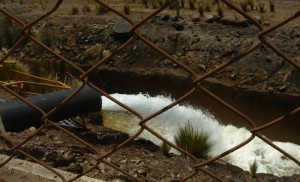Introduction
Northern Ireland Water (NIW) recently trialed three dissolved oxygen analyzers (DO meters) in parallel. These were installed at Culmor Wastewater Treatment Plant side by side in the same aeration lane, where measurements were recorded every minute for 6 months.
After processing more than a million points of data, the OxySense from Process Instruments (Pi) was shown by NIW to be the best solution.
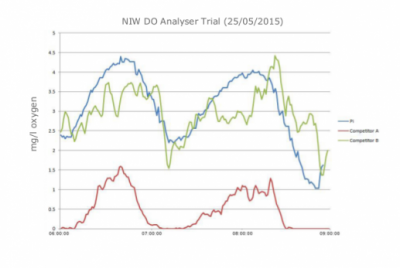
The graph shows a three hour snapshot of some of the results that led to NIW deciding that Pi’s DO meter performed the best overall. From looking at this graph it is clear why Pi was preferred: Competitor A’s sensor displays a low, inaccurate reading and Competitor B’s sensor is afflicted by noise. These results are discussed in more details later in this Focus On.
The Plant
The trial plant had used Competitor B’s DO meters for some time in all their aeration lanes, however they found that the sensing end cap required replacing quite frequently (every 6 months). The replacement costs of £90 ($120, €105) per sensor started to accumulate and the plant decided to seek an alternative.
AutoCleaning
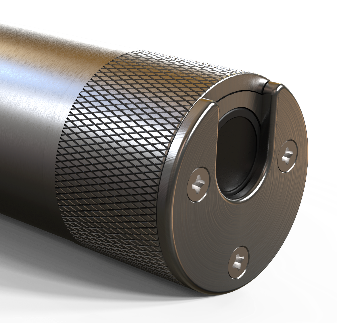 Pi’s sensor was equipped with its AutoClean end cap (see image, right), which actively cleans the sensor with compressed air (or clean water) to remove sludge and debris from the sensor tip on a regular basis.
Pi’s sensor was equipped with its AutoClean end cap (see image, right), which actively cleans the sensor with compressed air (or clean water) to remove sludge and debris from the sensor tip on a regular basis.
Peter Martin, M&E Manager, NIW.
Competitor A’s sensor was attached to a flexible mounting which allowed the sensor to move with the sludge and aeration bubbles, theoretically cleaning the sensor passively.
Competitor B’s sensor did not have any automatic cleaning functionality.
All three sensors periodically received a manual clean as part of the plant’s regular maintenance schedule, ensuring the test was fair for the sensors without a cleaning system.
Results
Measurements from the 25th of May 2015 have been used to demonstrate the variation between the different analyzers. This date set was chosen to be representative of the whole trial.
Process Instruments
 The trial found that the CRIUS® OxySense from Pi provided the most accurate and reliable DO meter. The sensor was kept clean by Pi’s AutoClean system, and reported accurate and precise readings with the lowest noise. A gradual increase in dissolved oxygen content is easily observed during aeration, followed by a steady decline as the air blowers are turned off.
The trial found that the CRIUS® OxySense from Pi provided the most accurate and reliable DO meter. The sensor was kept clean by Pi’s AutoClean system, and reported accurate and precise readings with the lowest noise. A gradual increase in dissolved oxygen content is easily observed during aeration, followed by a steady decline as the air blowers are turned off.
Competitor A
 Competitor A’s sensor struggled to keep itself clean between the regular maintenance events, as the passive self cleaning system was ineffective. The instrument appears to inaccurately report lower readings as a result of sludge and debris coating the sensor. The DO sensor detects the increased oxygen dissolved during aeration, but then falls to a reading of zero for long periods of time.
Competitor A’s sensor struggled to keep itself clean between the regular maintenance events, as the passive self cleaning system was ineffective. The instrument appears to inaccurately report lower readings as a result of sludge and debris coating the sensor. The DO sensor detects the increased oxygen dissolved during aeration, but then falls to a reading of zero for long periods of time.
Competitor B

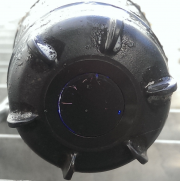 Readings from Competitor B’s sensor appear to lack precision and contain noise. This is most likely due to fouling of the sensor head (see image, right). The results had large variations between measurements, often making it difficult to distinguish the peaks during aeration. By the end of the six months, Competitor B’s sensor was found to be worn and required a replacement lumiphore end cap.
Readings from Competitor B’s sensor appear to lack precision and contain noise. This is most likely due to fouling of the sensor head (see image, right). The results had large variations between measurements, often making it difficult to distinguish the peaks during aeration. By the end of the six months, Competitor B’s sensor was found to be worn and required a replacement lumiphore end cap.
Peter Martin, M&E Manager, NIW.

